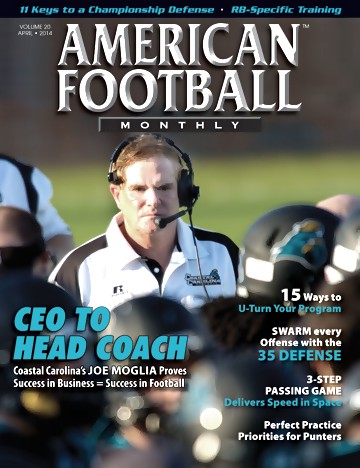Article CategoriesAFM Magazine
|
SPECIFICITY TRAINING The Key Factor for Optimizing Football Speedby: Dale BaskettFootball Speed Specialist © More from this issue Football speed training is too often confused between what should be correctly conceived versus what is incorrectly believed. This is relevant to you if you have a desire to make changes that will benefit the quality of each player’s speed capability. Change that will maximize results drastically. The majority of football coaches use training applications that are not processing their athletes’ football speed by the rule of specificity. That is, specific applications that offer pure value and are not diluted with variations of different training methods that will counter maximal speed gain. The simple fact is that time doesn’t allow for you to cram things into speed development and process quality results. You must have the correct theory in place in order to optimize the training. Finding what’s specifically relevant and what�....The full article can only be seen by subscribers.
|
|
|||||||
| HOME |
MAGAZINE |
SUBSCRIBE | ONLINE COLUMNISTS | COACHING VIDEOS |
Copyright 2026, AmericanFootballMonthly.com
All Rights Reserved





